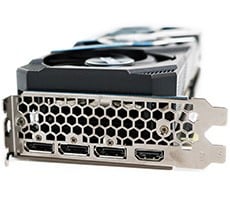NVIDIA GeForce 8800 GTX and 8800 GTS: Unified Powerhouses
To quickly asses the performance impact enabling CSAA had on frame-rates in a couple of popular games, we ran a handful of tests with F.E.A.R. and Prey using the GeForce 8800 GTX and GTS. We started with 4X anti-aliasing enabled, and cycled though the other modes offered with both games running at 1600x1200 with 16X anisotropic filtering enabled.
|
|
|


Jumping from 4X to 8X anti-aliasing with either card resulted in an approximate 20% to 30% performance drop, but from there on up, performance remained relatively stable until we hit the maximum 16xQ anti-aliasing mode. You may be asking yourself how this can be possible, as moving from 8X to 8xQ and ultimately 16X AA results in roughly equivalent performance. This is due to the Luminex Engine's ability to compress the redundant color and depth/stencil information into the memory footprint and bandwidth of 4 or 8 multi-samples. In fact, 8X AA and 16XAA both store only 1 texture sample and 4 color/Z samples. The two modes differ only in the number of coverage samples taken, which doesn't have as much of an impact on performance. 16xQ anti-aliasing on the other hand stores double the number of color/Z samples (8), hence the additional performance drop off.






